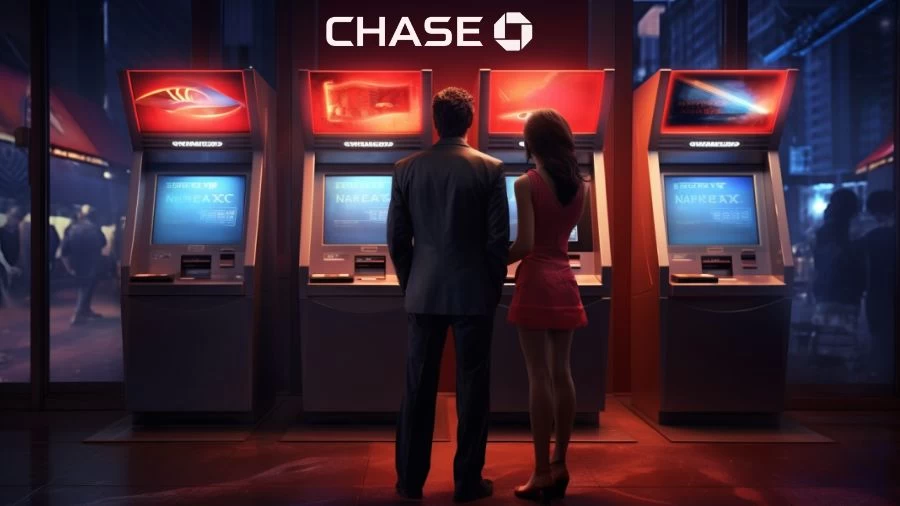
Chase Savings Account Interest Rate for November 2023
As of November 2023, Chase Savings Account offers an annual percentage yield (APY) of 0.01%, while Chase Premier Savings provides a slightly higher APY of 0.02%.
by Kowsalya
Updated Nov 03, 2023
On This Page
Chase Savings Account Interest Rate for November 2023
In November 2023, Chase Bank offers two primary savings accounts: Chase Savings and Chase Premier Savings. Both of these accounts have a minimum Annual Percentage Yield (APY) of 0.01%.
However, there is an opportunity to earn an additional 0.01 percentage point on the Chase Premier Savings account if you link it to a Chase Premier Plus Checking account or a Chase Sapphire Checking account and make at least five transactions per month. In this case, your interest rate would increase to 0.02%.
While these rates provide a baseline of the interest you can earn with Chase, it's important to note that both savings accounts come with monthly fees that can significantly reduce your actual earnings if you don't meet the qualification criteria for fee waivers.
The Chase Savings account has a $5 monthly fee, while the Chase Premier Savings account has a $25 monthly service fee with stricter requirements for fee waivers.
Given the relatively low APY offered by Chase, it may not be the best choice for individuals primarily seeking to maximize their savings. Many other financial institutions offer higher interest rates on savings accounts.
However, Chase's convenience and accessibility, with a large network of branches and ATMs, may make it a suitable option for those who are looking for a convenient place to manage their finances but not necessarily for optimizing savings growth. It's worth considering alternative banks with more competitive interest rates if you are primarily focused on earning higher returns on your savings.
Overview of Chase Bank Interest Rates
Chase Bank's savings account offerings, including Chase Savings and Chase Premier Savings, come with certain terms and conditions that potential customers should be aware of.
Neither account requires a minimum deposit to get started, but they both have monthly fees. Chase Savings has a $5 monthly fee, which can be avoided by maintaining a minimum balance of $300, linking the account to an eligible Chase checking account, or scheduling automatic monthly deposits of $25 or more from a Chase checking account.
On the other hand, Chase Premier Savings imposes a $25 monthly service charge, but this can be waived by maintaining a minimum balance of $15,000 or by linking it to a Chase Premier Plus Checking or Chase Sapphire Checking account.
While Chase Savings account holders may earn a modest 0.01% APY, those with Chase Premier Savings can access what Chase refers to as "relationship rates." These higher interest rates are unlocked by linking the account to a Chase Premier Plus Checking or Chase Sapphire Checking account and making at least five transactions in a monthly statement period. However, even with these relationship rates, the interest earned remains relatively low, with a 0.02% APY.
It's important to note that these rates are significantly lower than what many online banks currently offer. Online banks often provide much higher APYs, ranging from approximately 0.50% APY to 4.00% APY or even higher.
While Chase Bank boasts over 4,700 branches for in-person banking convenience, those seeking to maximize their savings' growth potential may find that online banks offer more attractive interest rates.
Immerse yourself in the wealth of financial knowledge waiting to be discovered at MarketsHost, where you can access a multitude of resources covering every aspect of Finance.
What Do You Know All About Chase Bank?
Chase Bank is one of the largest and most well-established banks in the United States, offering a wide range of financial services to its customers for over 130 years. With its extensive history and reputation, Chase has become a trusted choice for millions of individuals across the country.
The bank provides a comprehensive selection of products and services, including banking solutions such as checking accounts, savings accounts, and loans, as well as investment services, credit cards, and personal loans. Its diverse offerings make it an ideal option for those seeking a reliable and full-service banking experience.
With a vast network of over 5,000 branches and 16,000 ATMs throughout the country, Chase ensures easy accessibility for its customers. Apart from traditional banking services, Chase also provides investment opportunities through mutual funds and annuities.
As an FDIC member, customers can have confidence in the safety and security of their deposits. However, while Chase Bank offers convenience and a broad range of options, individuals seeking the lowest fees and interest rates may wish to compare the bank with other financial institutions before making a final decision.
How Does Chase Bank Compare to Other Banks?
When comparing Chase Bank to other banks, particularly in terms of savings account interest rates, Chase's offerings are notably low in comparison to the national average.
As of September 2023, the average national deposit rate for a savings account stands at 0.45%, according to the FDIC. However, Chase Bank's savings rates fall significantly below this average. For example, Ally Bank's Online Savings Account, as a notable alternative, offers customers a 4.25% Annual Percentage Yield (APY).
While Chase may not provide a competitive interest rate on its savings accounts, it does offer the advantage of easy accessibility with no minimum opening deposit requirement. This may make it suitable for individuals who prioritize convenience and an extensive branch and ATM network, despite the lower interest rates.
In addition to traditional savings accounts, Chase Bank also offers certificates of deposit (CDs) as a low-risk savings option. Chase CDs come in various terms ranging from one month to 10 years. These CDs allow customers to lock in an interest rate for the entire term, but they may incur penalties if they withdraw the funds before the CD matures.
CD rates at Chase range from 0.02% to 5.00%, as of October 6, 2023. CD options can be beneficial for individuals looking to save money for specific future goals, such as a home purchase, but those who anticipate needing access to their funds before the CD term ends might consider alternative options or explore banks offering higher interest rates on savings accounts.
How to Open a Chase Savings Account?
Opening a savings account is a fundamental step in building a solid financial foundation. To guide you through the process, here are the steps and essential information on how to open a savings account:
- Choose Your Bank: Begin by researching different banks and credit unions in your area to find the one that suits your needs. Look for financial institutions with a good reputation for customer service, competitive interest rates, and reasonable fees.
- Pick a Savings Account Type: Consider the purpose of your savings and how often you'll need to access your funds. There are various types of savings accounts available, including traditional savings accounts and certificates of deposit (CDs). Traditional savings accounts are versatile and suitable for various savings goals, while CDs are better for longer-term savings due to their fixed interest rates.
- Understand Terms and Conditions: Thoroughly review and understand the terms and conditions of the selected savings account. Pay attention to any associated fees, the annual percentage yield (APY), minimum balance requirements, and other important details. This knowledge will help you make an informed decision.
- Prepare Required Documents: Financial institutions typically require specific documents to open a savings account. You'll likely need a government-issued photo ID, such as a driver's license or passport, as well as proof of your current address. Some banks may also require your Social Security number or Individual Taxpayer Identification Number (ITIN). Gather these documents and keep them ready for the account-opening process.
- Prepare an Opening Deposit: Many savings accounts require an initial deposit to open the account. This amount is usually specified in the account's terms and conditions. Ensure you have the required opening deposit ready to complete the account-opening process.
- Apply: Once you've selected a bank, chosen the type of savings account, gathered your necessary documents, and prepared the opening deposit, you can begin the application process. Most banks offer the option to apply online, making the process convenient and efficient. Alternatively, you can visit a local bank branch in person to open the account.
- Start Saving: After successfully opening your savings account, you can begin making regular deposits and growing your savings. Consider setting up automatic transfers from your checking account to make saving more convenient and consistent.
Chase Savings Account Interest Rate for November 2023- FAQs
1. What are the interest rates for Chase Savings and Chase Premier Savings accounts in November 2023?
The interest rates for Chase Savings and Chase Premier Savings accounts are 0.01% and 0.02%, respectively.
2. Are there any minimum deposit requirements for these savings accounts?
Both Chase Savings and Chase Premier Savings accounts do not require a minimum deposit.
3. How can I avoid the monthly fee for a Chase Savings account?
You can avoid the $5 monthly fee by maintaining a minimum balance of $300, linking an eligible Chase checking account, or setting up automatic savings deposits of $25 or more each month.
4. What is the monthly service charge for Chase Premier Savings?
The monthly service charge for Chase Premier Savings is $25, but it can be waived by maintaining a minimum balance of $15,000 or linking the account to specific checking accounts.
5. How can I earn the higher "relationship rates" on a Chase Premier Savings account?
To earn the relationship rates, you need to link your account to Chase Premier Plus Checking or Chase Sapphire Checking and make at least five transactions per month from the linked checking account.




